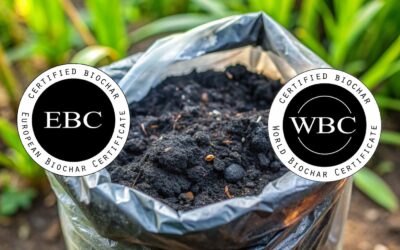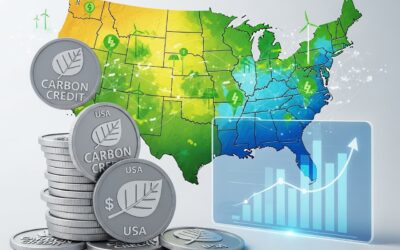Climate action conjures up images of solar panels and electric cars. But in Japan, I discovered a different, more locally rooted approach : biochar.
It is not just a technology to sequester carbon, but a holistic system that integrates economy, culture and community .
This model is regenerating rural economies and reinventing ancient practices for the modern world. Here are the five most surprising lessons I’ve learned.
A Strong Signal from the Market: Carbon Credits at a Premium Price
In Japan, biochar carbon credits (J-Credits) are worth about $270 per ton , nearly double the international markets and seven times more than other domestic credits.
This is not an anomaly, but a strategic political choice. By setting such a high price, the government:
- It encourages large-scale production .
- It makes projects economically sustainable from the beginning.
- It reports that biochar is a national priority for decarbonization.
Climate Action at the Supermarket: The “Cool Vege” Label
How can we make carbon sequestration tangible? With the Cool Vege® brand , which identifies fruits and vegetables grown with biochar.
This move is brilliant for two reasons:
- For farmers: Create a second source of income by selling produce at a premium and reducing dependence on the carbon market.
- For consumers: Turn an everyday purchase into concrete climate action by putting the power in their hands.
A Return to the Future: The Cultural Roots of Biochar
The use of charcoal in agriculture is not new in Japan, where rice husk charcoal was previously used to fertilize fields.
This cultural heritage is a huge advantage. Modern biochar is not seen as a foreign technology, but as the rediscovery of traditional wisdom , enhanced by science. This greatly facilitates acceptance and adoption by rural communities.
Not a Product, but a Local Ecosystem
Biochar is at the heart of a system that revitalizes rural areas. In Kameoka’s “Carbon Minus Project,” for example, local waste biomass (such as invasive bamboo ) is transformed into biochar.

This model generates value on multiple levels:
- Economic: Projects are financed through the sale of J-Credits .
- Environmental: Sequesters carbon, regenerates soil and manages waste.
- Social: Creates new opportunities and strengthens community identity.
Biochar 2.0: Smart Soil Innovation
Innovation is transforming biochar from a simple soil improver to an advanced technological product.
Products like “Soratan” aren’t just charcoal, but blends enriched with specific microbes that dramatically improve soil health and crop yields. This offers farmers a direct and measurable economic return, independent of carbon credits , making sustainability intrinsically profitable.
Conclusion
The success of the Japanese model lies in its integration. It combines policy stability (premium credit), market intelligence (Cool Vegetables), cultural depth, and technological innovation. Each element reinforces the others, creating a virtuous cycle.
As the world searches for climate solutions, Japan’s holistic approach could be the model we need to transform not only our soils, but also our economies.







